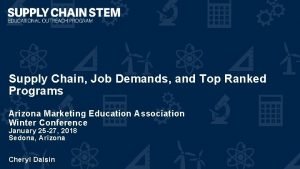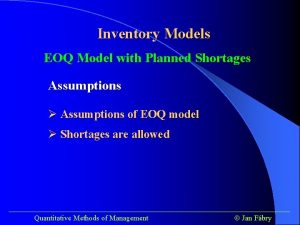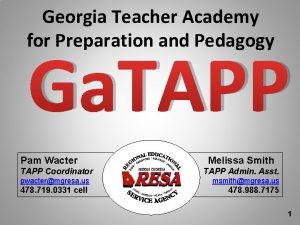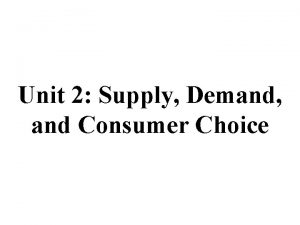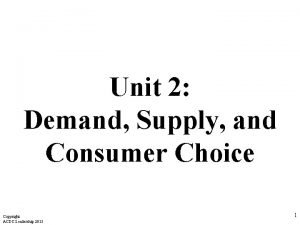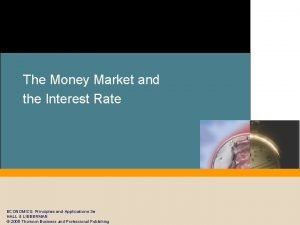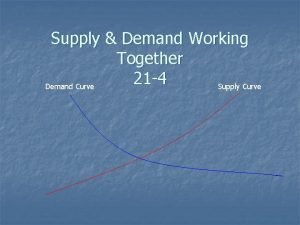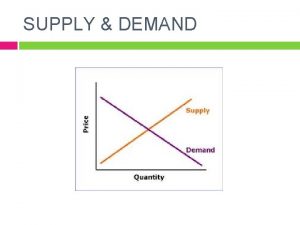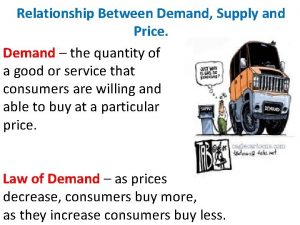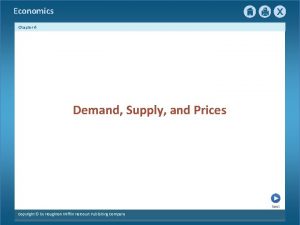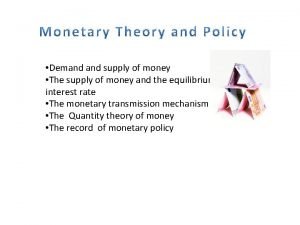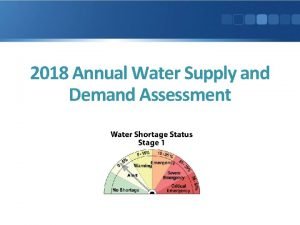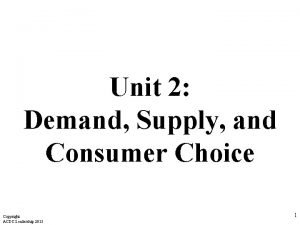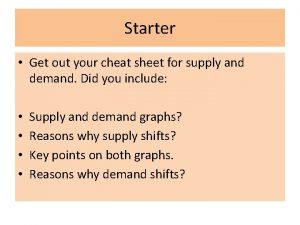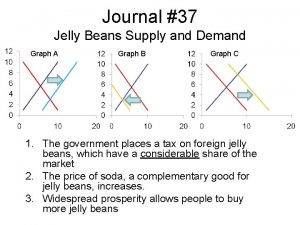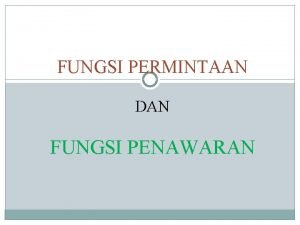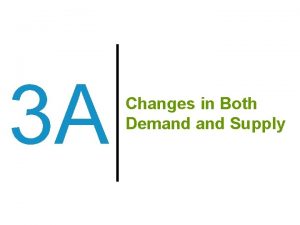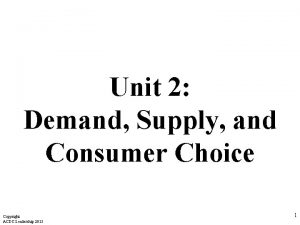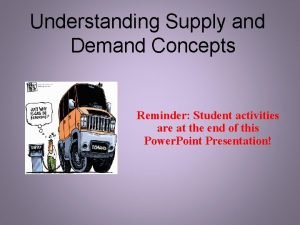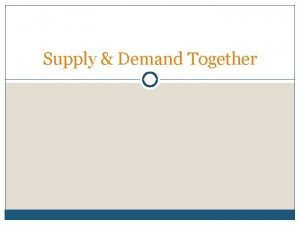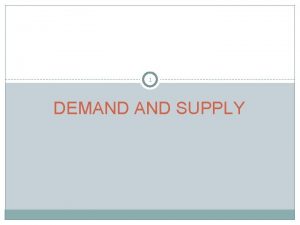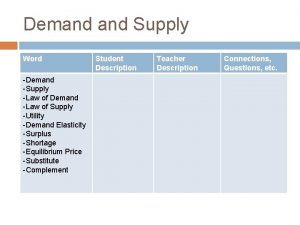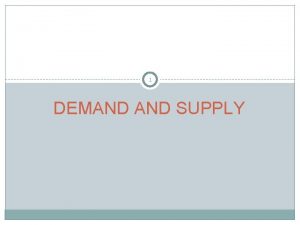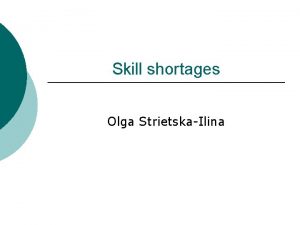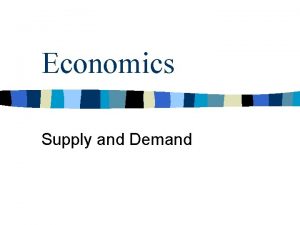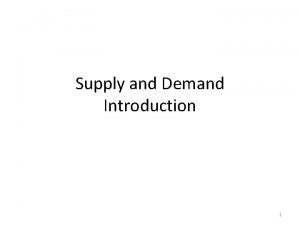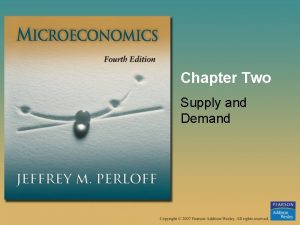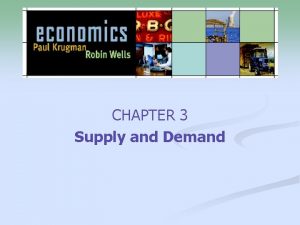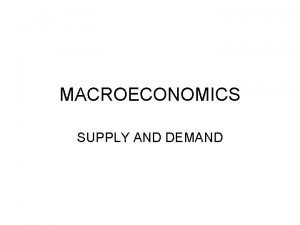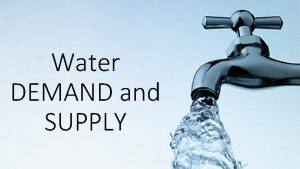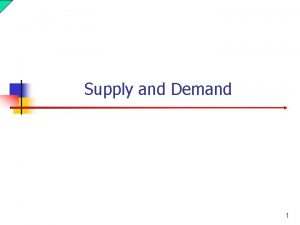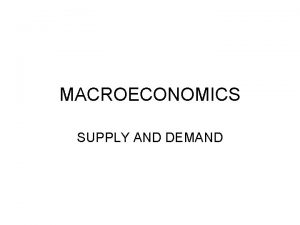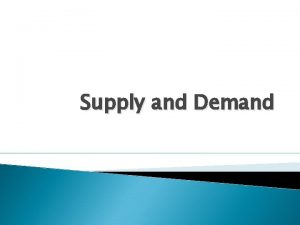Georgia Teacher Shortages Supply and Demand Georgia Professional








































- Slides: 40

Georgia Teacher Shortages, Supply and Demand Georgia Professional Standards Commission Kelly C. Henson, Executive Secretary August 27, 2008 Georgia Professional Standards Commission

Teacher Demand Georgia Professional Standards Commission

Georgia P-12 Actual and Projected Teacher Staffing 1997 -1998 through 2011 -2012 School Years Teacher staffing projections developed with Gaussian curvilinear regression model using student enrollment and student-teacher ratios Georgia Professional Standards Commission © 2008 GPSC

Georgia Fall Student Enrollment by School Level, 1994 -1995 through 2007 -2008 School Years Based on FTE-1, October 1995 - 2007 Georgia Professional Standards Commission © 2008 GPSC

Teacher Shortage Georgia Professional Standards Commission

Teacher Shortage, Federally Defined By the Federal definition, shortage is identified as a lack of full certification, or in Georgia terminology Clear Renewable certification. The Federal definition is more stringent than the No Child Left Behind (NCLB) “Not Highly Qualified” or the more commonly used “Out-of-Field” definitions in which a teacher has no certification for the field being taught. Produced for the 2007 -2008 school year by GPSC for Federal reporting of teacher shortage from GADOE CPI 08 -1 and GPSC certification data. Georgia Professional Standards Commission © 2008 GPSC

Number & Percent of Georgia Teachers Without Full Certification, Highest Twelve Subject Areas Produced for the 2007 -2008 school year by GPSC for Federal reporting of teacher shortage from GADOE CPI 08 -1 and GPSC certification data. Georgia Professional Standards Commission © 2008 GPSC

Sources of New Teachers Georgia Professional Standards Commission

Sources of Newly Hired Georgia Teachers, 2006 -2007 School Year Based on CPI-2, March 2007 Georgia Professional Standards Commission © 2008 GPSC

Contribution of Certificated New Teachers by Georgia Institutions of Higher Education, 2006 -2007 School Year Program completers reported by IHE’s for the 2007 school year; program completers certified in a teaching field first time in Georgia between July 1, 2006 and December 31, 2007. Georgia Professional Standards Commission © 2008 GPSC

Number of Newly Hired Georgia Teachers from Major Sources Past Three School Years Based on CPI-2, March 2005, 2006, 2007 Georgia Professional Standards Commission © 2008 GPSC

Percentage of Newly Hired Georgia Teachers from Major Sources Past Three School Years Based on CPI-2, March 2005, 2006, 2007 Georgia Professional Standards Commission © 2008 GPSC

Georgia Traditional Higher Education Fully Certified Teacher Yield, First Three Years After Completion, Six Year Average (2000 -2005) Based on CPI-2, March 2000 – 2007. Georgia Professional Standards Commission © 2008 GPSC

Yield of Newly Certified Teachers by Public IHEs Students Completing an Education Program in the 2006 -2007 School Year Certified Albany State University Employed Percent 18 16 88. 9% Armstrong Atlantic State University 157 129 82. 2% Augusta State University 103 83 80. 6% Clayton State University 33 25 75. 8% Columbus State University 129 93 72. 1% Fort Valley State University 2 2 100. 0% Georgia College and State University 150 126 84. 0% Georgia Southern University 296 247 83. 4% 82 71 86. 6% Georgia State University 277 232 83. 8% Kennesaw State University 418 350 83. 7% North Georgia College and State University 250 205 82. 0% University of Georgia 471 353 74. 9% University of West Georgia 326 276 84. 7% Valdosta State University 249 206 82. 7% 2, 961 2, 414 81. 5% Georgia Southwestern State University Total Program completers reported by IHE’s for the 2006 -2007 school year; completers certified in a teaching field first time between July 1, 2006 and December 31, 2007. Employment shown on GADOE CPI 08 -1. Georgia Professional Standards Commission © 2008 GPSC

Yield of Newly Certified Teachers by Private IHEs Students Completing Education Program in the 2006 -2007 Academic Year Certified Agnes Scott College Employed Percent 29 20 69. 0% 6 3 50. 0% Berry College 48 37 77. 1% Brenau University 65 55 84. 6% Brewton-Parker College 40 36 90. 0% Clark Atlanta University 28 21 75. 0% Covenant College 24 5 20. 8% Emmanuel College 38 31 81. 6% Emory University 16 11 68. 8% Lagrange College 30 18 60. 0% Mercer University 116 100 86. 2% 4 3 75. 0% Piedmont College 98 84 85. 7% Reinhardt College 32 28 87. 5% Shorter College 30 26 86. 7% Spelman College 11 11 100. 0% Thomas University 18 16 88. 9% Toccoa Falls College 13 6 46. 2% 8 8 100. 0% 654 519 79. 4% Atlanta Christian College Paine College Wesleyan College Total Program completers reported by IHE’s for the 2006 -2007 school year; completers certified in a teaching field first time between July 1, 2006 and December 31, 2007. Employment shown on GADOE CPI 08 -1. Georgia Professional Standards Commission © 2008 GPSC

Public & Private Georgia Higher Education Yield: Core Area Certificates, 2006 -2007 School Year Program completers reported by IHE’s for the 2006 -2007 school year; program completers certified in a teaching field first time in Georgia between July 1, 2006 and December 31, 2007. Georgia Professional Standards Commission © 2008 GPSC

Public & Private Georgia Higher Education Yield: Elementary and Middle School Certificates, 2006 -2007 School Year Program completers asserted by IHE’s for the 2006 -2007 school year; program completers certified in a teaching field first time in Georgia between July 1, 2006 and December 31, 2007. Georgia Professional Standards Commission © 2008 GPSC

Public & Private Georgia Higher Education Yield: Special Education Certificates, 2006 -2007 School Year Program completers asserted by IHE’s for the 2006 -2007 school year; program completers certified in a teaching field first time in Georgia between July 1, 2006 and December 31, 2007. Georgia Professional Standards Commission © 2008 GPSC

Teacher Attrition Georgia Professional Standards Commission

Annual Percent Attrition of Teachers from the Georgia Public School Workforce, 1997 -1998 through 2006 -2007 School Years Based on CPI-2, March 1998 – 2008 Georgia Professional Standards Commission © 2008 GPSC

Two-Year Average Annual Teacher Attrition Rates by Subject Areas Average of two years attrition using CPI-2, March 2005 – 2007. Georgia Professional Standards Commission © 2008 GPSC

Two-Year Average Annual Teacher Attrition Counts by Subject Areas Average of two years attrition using CPI-2, March 2005 – 2007. Georgia Professional Standards Commission © 2008 GPSC

Teacher Hiring Demand from Student Enrollment & Policy Change, Teacher Attrition & Promotion, 1997 -1998 through 2007 -2008 Academic Years Based on CPI-2, March 1997 – 2008 Georgia Professional Standards Commission © 2008 GPSC

Comparison of Teacher Ages, 1997 -1998 and 2006 -2007 School Years Based on CPI-2, March 1998 and 2007 Georgia Professional Standards Commission © 2008 GPSC

Comparison of Traditional and Actual Retention of Teachers in the Georgia Public School System Based on CPI-2, March 1997 through 2007 Georgia Professional Standards Commission © 2008 GPSC

Summary Georgia Professional Standards Commission

Number of New Teachers Needed by the 2012 School Year By 2012, 28, 749 new teachers will be needed that year to meet growth and replacement demands Based on projected student enrollment growth and a stable 9. 14% teacher attrition rate Georgia Professional Standards Commission © 2008 GPSC


Mathematics and Science Task Force Recommendations

Introduction • Georgia is the third fastest growing state in the nation • Four years of mathematics and science are now a requirement for graduation • A more rigorous and integrated secondary curriculum has been implemented • Current production of mathematics teachers falls short of both current and future needs • The requirement for four years of sciences will increase demand for specific certifications • Only three physics teachers were produced last year • Georgia students must have available high-level science and mathematics courses in order to compete nationally and internationally

Task Force Members Diane Bradford, Deputy Superintendent, Office of Education Support & Improvement, Georgia Department of Education Renee Byrd-Lewis, Director, Community Relations, Scientific Atlanta Cindi Chance, Dean, College of Education, Georgia Southern University Ann Cramer, Director of North America IBM Corporate Citizenship Steve Dolinger, President, Georgia Partnership for Excellence in Education Adrian Epps, Associate Dean, College of Science & Mathematics, Kennesaw State University Herb Garrett, Executive Director, Georgia School Superintendents Association Stephanie Gordy, Executive Director, Griffin Regional Education Service Agency Kelly Henson, Executive Secretary, Georgia Professional Standards Commission Phil Horton, Professor, Covenant College Sheila Jones, Senior Executive Director of P-16 Programs, Board of Regents of the University System of Georgia Jan Kettlewell, Vice Chancellor, Board of Regents of the University System of Georgia Connie Kopcsak, Master Teacher, Mathematics, Whitfield County Schools Teresa Mac. Cartney, Division Director, Educational Development Division, Office of Planning & Budget Kathleen Mathers, Director of External Relations, Governor’s Office of Student Achievement Bill Mc. Cargo, Vice President of Community Relations, Scientific Atlanta Paul Ohme, Director, Georgia Institute of Technology Center for Education Integrating Science, Mathematics & Computing (CEISMC) Trish Paterson, Executive Director, Teacher Quality Initiatives, Board of Regents of the University System of Georgia José Perez, Member, Georgia State Board of Education Mark Pevey, Senior Executive Director, P-16 Data and Operations, Board of Regents of the University System of Georgia Stephen Pruitt, Director of Academic Standards, Georgia Department of Education Bettye Raye, Superintendent, Social Circle City Schools Jennifer Rippner Buck, Executive Director, Governor’s Office of Student Achievement Holly Robinson, Commissioner, Bright from the Start, Georgia Department of Early Care & Learning Bobby Stephens, Consultant, Metro Regional Educational Service Agency Pam Walker, Master Teacher, Science, Douglas County Schools.

Task Force Recommendations 1. 2. 3. 4. 5. 6. 7. Attract New Mathematics & Science Teachers With Differentiated Pay Increase Elementary Teacher Mathematics & Science Endorsements Create an Efficient Alternative Middle & High School Teacher Preparation Route Create Adjunct Faculty Certification for High Need Subjects Redirect Teacher Scholarship Loan Funds Increase Science Teacher Education Programs Improve Teacher Retention

1. Attract New Mathematics and Science Teachers With Differentiated Pay • Pay new fully-certified mathematics and science teachers at Step 4 of the Georgia Teacher Salary Scale • Raise current fully-certified mathematics and science teachers at Steps E, 1, 2 or 3 to Step 4 of the Teacher Salary Scale • Require mathematics and science teachers to earn Master Teacher status to retain pay increase

2. Increase Elementary Teacher Mathematics and Science Endorsements • Increase opportunities for elementary teachers to earn the endorsements • Provide differentiated pay for elementary teachers with the endorsements

3. Create an Efficient Alternative Middle & High School Teacher Preparation Route • Subjects Mathematics, Science, English/Language Arts, Foreign Language, Social Studies, History, Geography, Economics, Political Science, Behavioral Science • Initial Requirements – Bachelor’s Degree or Higher (2. 5 GPA) – GACE Basic Skills Assessment – GACE Content Assessment • Initial Placement – Employment – Three Year Non-Renewable Credential • Clear Renewable Certificate Requirements – Coaching (One year minimum) – Georgia Special Requirements – GACE Professional Pedagogy Assessment

4. Create Adjunct Faculty Certification for High Need Subjects • Enable mathematics and science experts to teach part-time – One-year renewable license – Mentoring for teaching skills

5. Redirect Teacher Scholarship Loan Funds • For college students who intend to become mathematics or science teachers – Redirect $1 million each year for the Promise Teacher Scholarship Loan Program – Redirect $2 million each year for the HOPE Teacher Scholarship Loan Program

6. Increase Science Teacher Education Programs • Simplify program approval process • Increase flexibility for institutions to design preparation programs • Streamline current program approval and review procedures

7. Improve Teacher Retention • Design and implement statewide intensive new teacher induction program

Task Force Recommendations 1. 2. 3. 4. 5. 6. 7. Attract New Mathematics & Science Teachers With Differentiated Pay Increase Elementary Teacher Mathematics & Science Endorsements Create an Efficient Alternative Middle & High School Teacher Preparation Route Create Adjunct Faculty Certification for High Need Subjects Redirect Teacher Scholarship Loan Funds Increase Science Teacher Education Programs Improve Teacher Retention
 Supply chain shortages are
Supply chain shortages are Module 5 supply and demand introduction and demand
Module 5 supply and demand introduction and demand Matching supply with demand
Matching supply with demand Eoq model assumptions
Eoq model assumptions Wjat is economics
Wjat is economics Deficient demand and excess demand
Deficient demand and excess demand Dependent demand inventory means
Dependent demand inventory means Halimbawa ng supply schedule
Halimbawa ng supply schedule What is demand estimation
What is demand estimation Distinguish between individual demand and market demand
Distinguish between individual demand and market demand Independent demand inventory system
Independent demand inventory system Tapp teacher certification
Tapp teacher certification Unit 2 demand supply and consumer choice
Unit 2 demand supply and consumer choice Chapter 6 section 1 combining supply and demand answers
Chapter 6 section 1 combining supply and demand answers New grilling technology cuts production time in half
New grilling technology cuts production time in half Money market equilibrium
Money market equilibrium Combining supply and demand worksheet
Combining supply and demand worksheet Interaction of demand and supply
Interaction of demand and supply What is the relationship between supply and price
What is the relationship between supply and price Supply and demand of loanable funds
Supply and demand of loanable funds Market for loanable funds graph
Market for loanable funds graph Supply and demand economics project
Supply and demand economics project Chapter 6 section 2 supply and demand in everyday life
Chapter 6 section 2 supply and demand in everyday life Money supply and demand graph
Money supply and demand graph Supply demand rule
Supply demand rule Aggregate supply shifters
Aggregate supply shifters Shift in sras curve
Shift in sras curve Aggregate supply and demand graph
Aggregate supply and demand graph Annual water supply and demand assessment
Annual water supply and demand assessment Aggregate demand and aggregate supply
Aggregate demand and aggregate supply Unit 2 demand supply and consumer choice
Unit 2 demand supply and consumer choice Supply and demand together
Supply and demand together Supply and demand cheat sheet
Supply and demand cheat sheet Supply and demand conclusion
Supply and demand conclusion The supply and demand for jelly beans
The supply and demand for jelly beans Fungsi penawaran dan permintaan
Fungsi penawaran dan permintaan Supply and demand conclusion
Supply and demand conclusion Supply and demand
Supply and demand Unit 2 demand supply and consumer choice answer key
Unit 2 demand supply and consumer choice answer key Direct causes
Direct causes Indiana jones supply and demand
Indiana jones supply and demand
